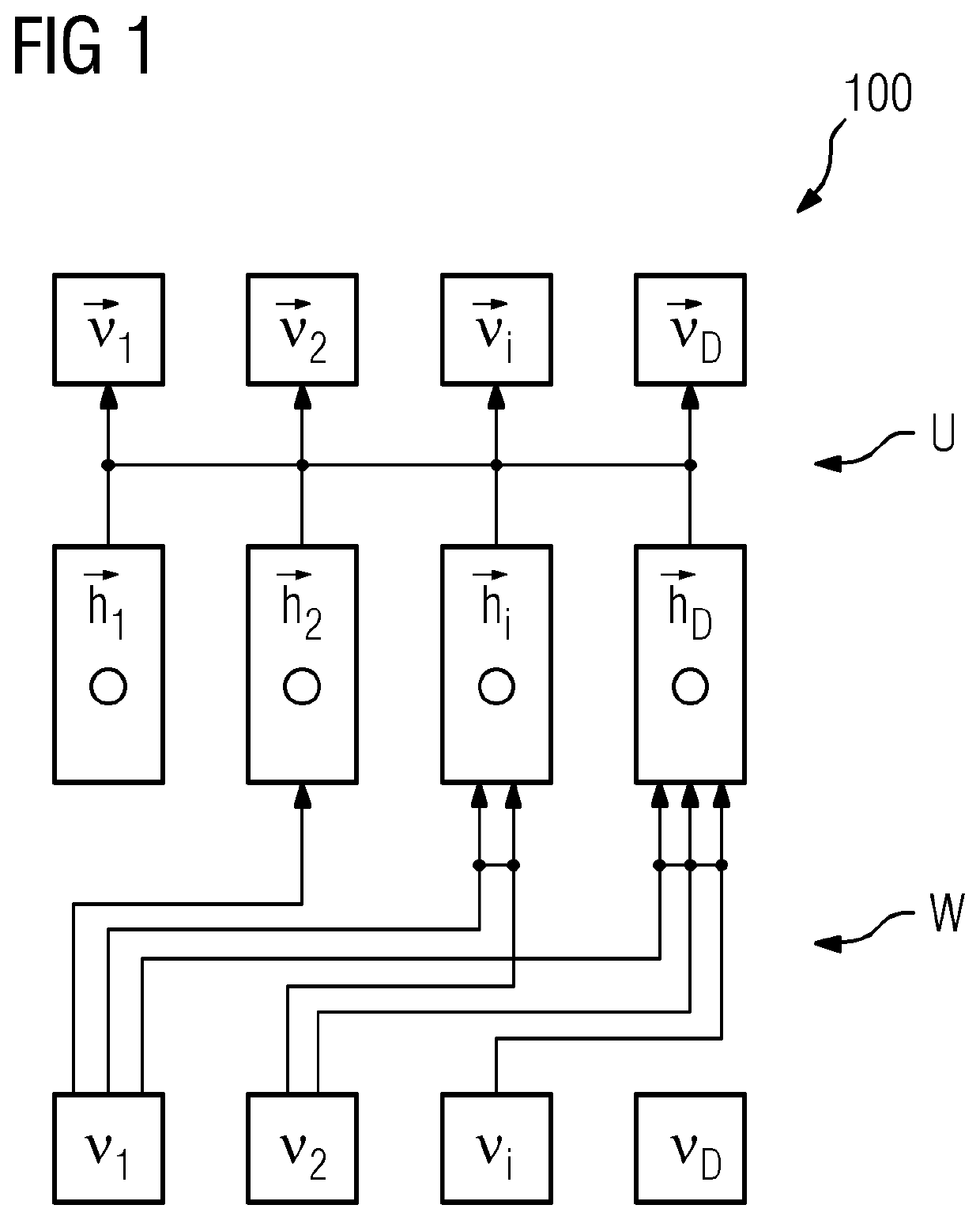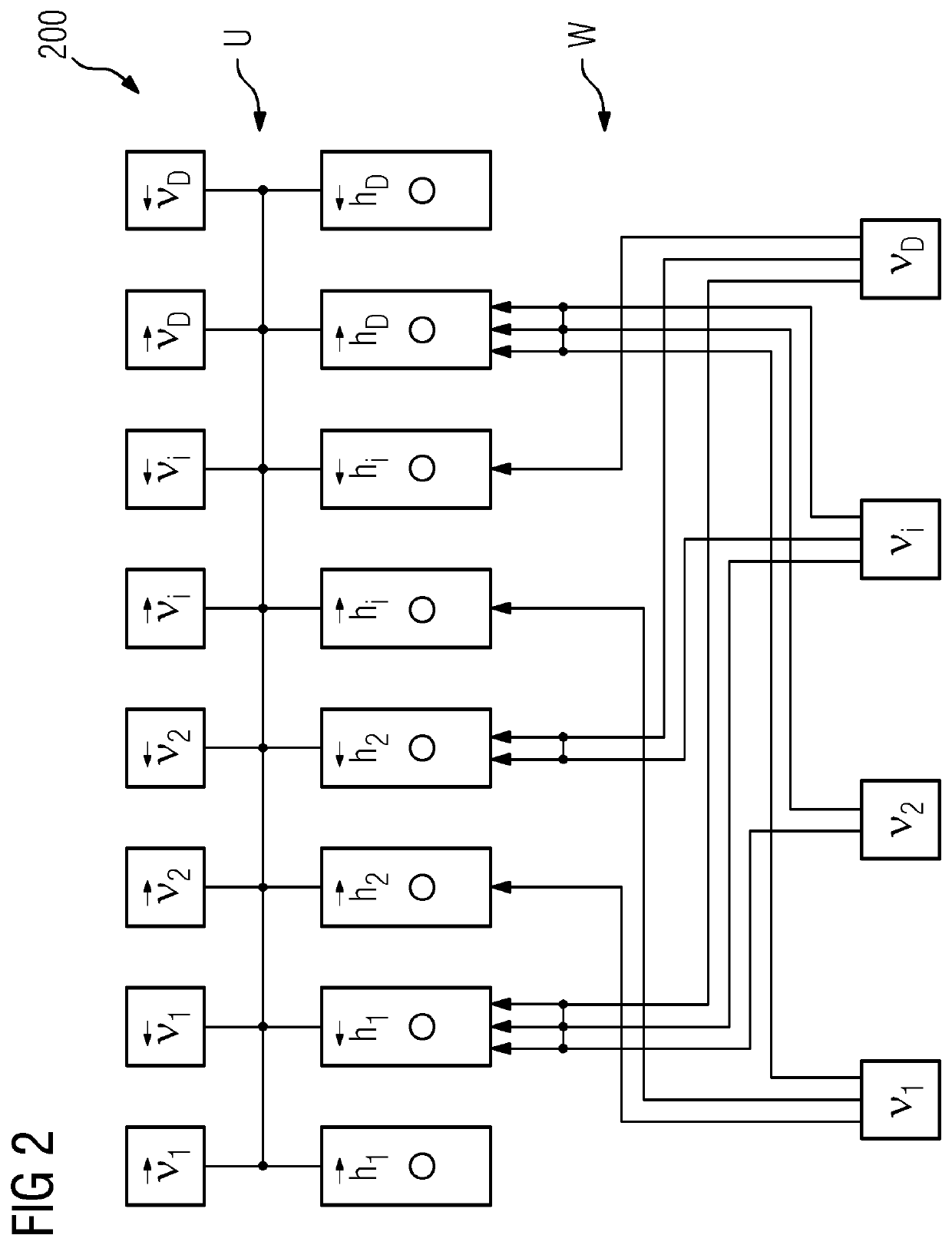System and method for natural language processing
a natural language processing and system technology, applied in the field of natural language processing system, can solve the problems of not being appropriate, lstm-lms does not capture semantics at the document level, and does not consider semantic information
- Summary
- Abstract
- Description
- Claims
- Application Information
AI Technical Summary
Benefits of technology
Problems solved by technology
Method used
Image
Examples
Embodiment Construction
[0040]In FIG. 1 a DocNADE model 100 is illustrated according to the state of the art. DocNADE 100 is a generative neural autoregressive topic model to account for word counts, inspired by Replicated Softmax (RSM) and Neural Autoregressive Topic Model (NADE). A document is represented by transforming its Bag of Words (BoWs) into a sequence v=[v1, . . . , vD] of size D, where each element vi∈{1,2, . . . , K} corresponds to a multinominal observation (representing a word from a vocabulary of size K). Thus, vi is the index in the vocabulary of the ith word of the document v. DocNADE 100 models the joint distribution conditional p(v) of all words vi by decomposing it as p(v)=Πi=1Dp(vi|v), where each autoregressive conditional p(vi|v) for the word observation vi is computed using the preceding observation v∈{vi, . . . , vi−1} in a feed-forward neural network for i∈{1, . . . , D}, with hidden layers {right arrow over (h)}i
[0041]h→i(Vi)=g(e+∑kiW:,vk)(1)andp(vi=w❘vi)=exp(bw+Uw,:h→iDN(...
PUM
 Login to View More
Login to View More Abstract
Description
Claims
Application Information
 Login to View More
Login to View More - R&D
- Intellectual Property
- Life Sciences
- Materials
- Tech Scout
- Unparalleled Data Quality
- Higher Quality Content
- 60% Fewer Hallucinations
Browse by: Latest US Patents, China's latest patents, Technical Efficacy Thesaurus, Application Domain, Technology Topic, Popular Technical Reports.
© 2025 PatSnap. All rights reserved.Legal|Privacy policy|Modern Slavery Act Transparency Statement|Sitemap|About US| Contact US: help@patsnap.com



